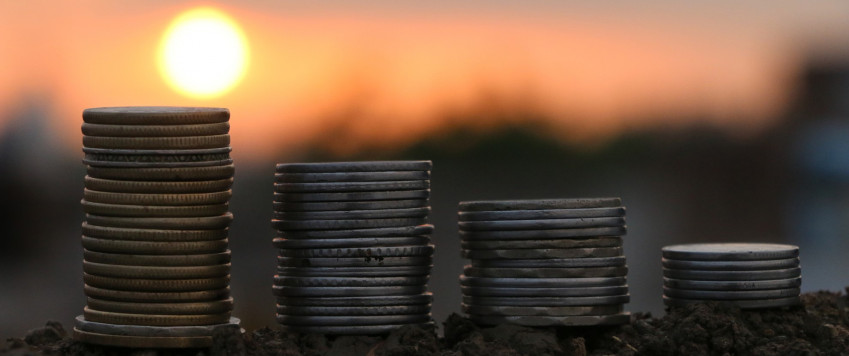The pandemic is highlighting the darker and brighter sides of the economy

In the fourth quarter of 2020, GDP was like a globe with its one side facing the sun, while its other side was covered by the darkness of the night. The impact of the second wave of the pandemic on the goods industry was much smaller, with some goods producers recording even higher production volumes than a year ago. Meanwhile, the effect of the state-of-emergency restrictions on the services sector was severe and harsh.
Naturally, these sectors cannot do without each other as goods, besides their production, also need to be advertised, sold and transported. Thus, some service providers have had more work than ever, which is evident by the queues outside post offices and other delivery centres. It should also be noted that some goods are currently in low demand: has anyone bought a new festive outfit for this season?
However, the average temperature in the hospital, i.e. allegorically the goods and services sectors, indicates that the goods industry is sufficiently healthy, whereas the services sector suffers from pneumonia and – at best – receives life support from the government support instruments.
On the demand side, we can also observe the impact of the national restrictions, income decline and high uncertainty, all of which has constrained people in their consumption and investment decisions. Similar to the situation at the start of the pandemic in spring, consumption also recorded notable declines in the fourth quarter of 2020, largely on account of the measures introduced to contain the virus, which made much of the spending – mostly spending on services, inter alia travel, cultural, sporting and other activities – impossible.
Investment activity was sluggish at the end of 2020 and throughout the year. Amid heightened uncertainty, private sector investors were cautious, and part of investors postponed their investment plans. Meanwhile, the decision to allocate additional funds for the improvement of infrastructure as well as other types of support reinforced the government investment. However, not all projects were brought to life.
Moreover, external demand was undoubtedly affected by the global epidemiological problems. Latvia's main trade partners fought the crisis with various success. Overall, however, their economic activity was more resilient compared to the rest of the world. Exports of goods were largely supported by the wood industry and agriculture with its record-high grain harvest, as well as demand for food products. Looking at services exports, travel and transportation services were hit most severely, which can be largely attributed to the introduced restrictions. Moreover, the above impact was not offset by the expansion of the construction and business services.
What will the future bring? Although the restrictions are being eased slightly, the year overall has begun with major challenges, and we cannot reasonably set ambitious growth targets for the near term.
In the second half of the year, much may depend on the vaccination process, its efficiency and its dynamics against that of other countries. There is another interesting question: how much of the savings accumulated during the restrictions (i.e. precautionary savings and savings accumulated due to the pent-up consumption) will be spent and what for? This aspect may significantly affect the economic growth rate. In any case, this year, too, promises to be full of challenges.
Textual error
«… …»


